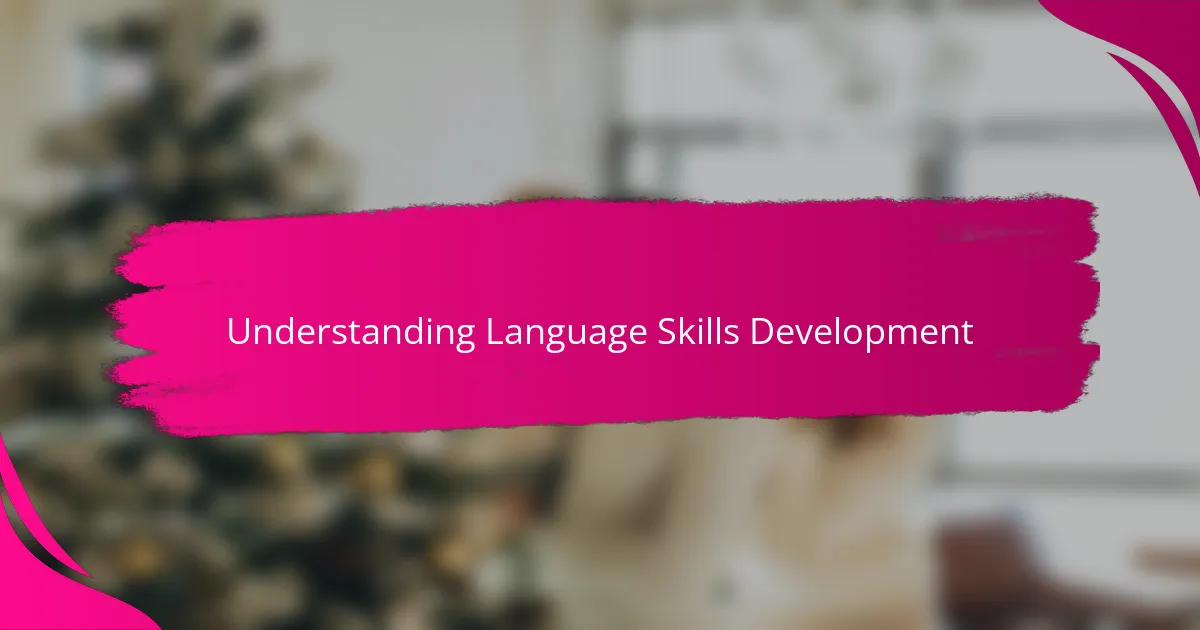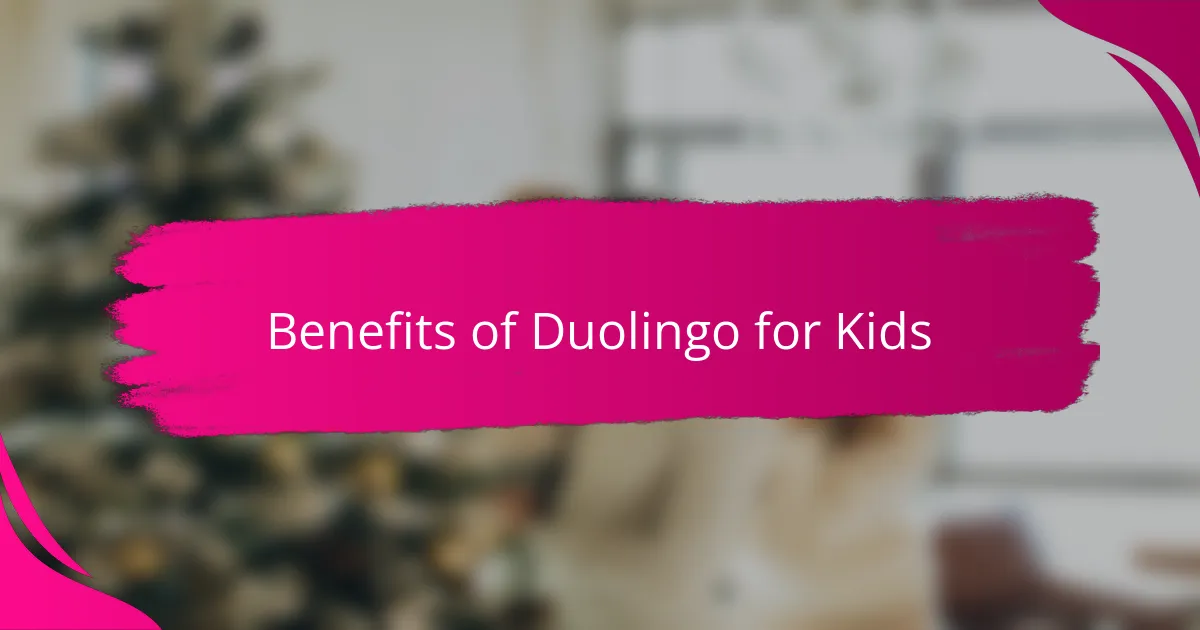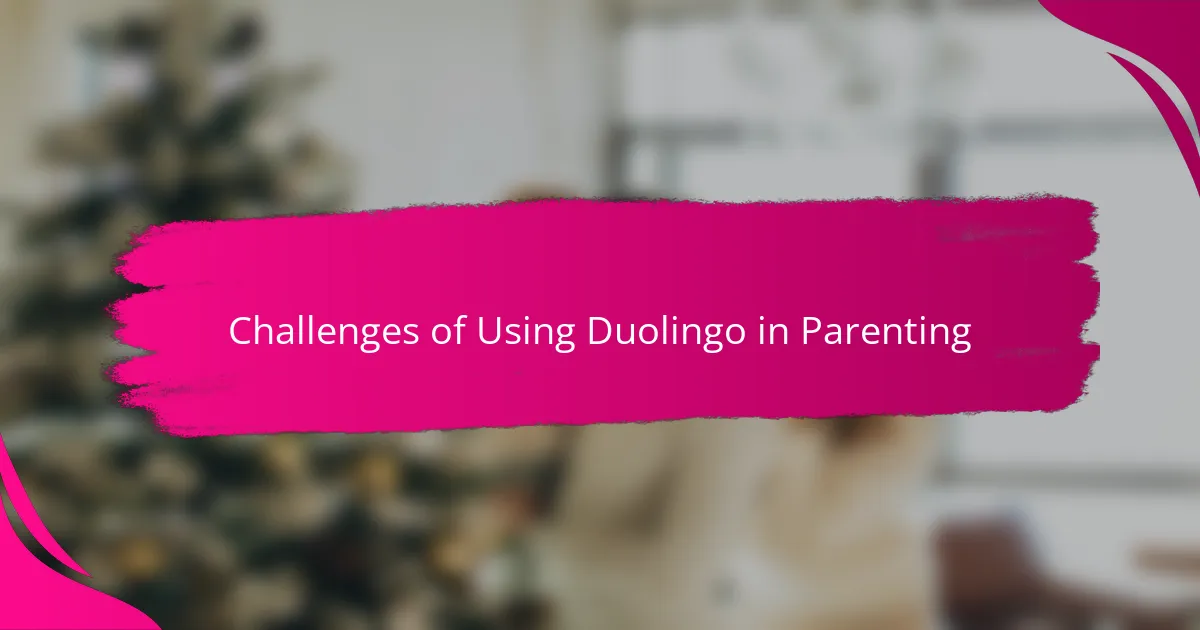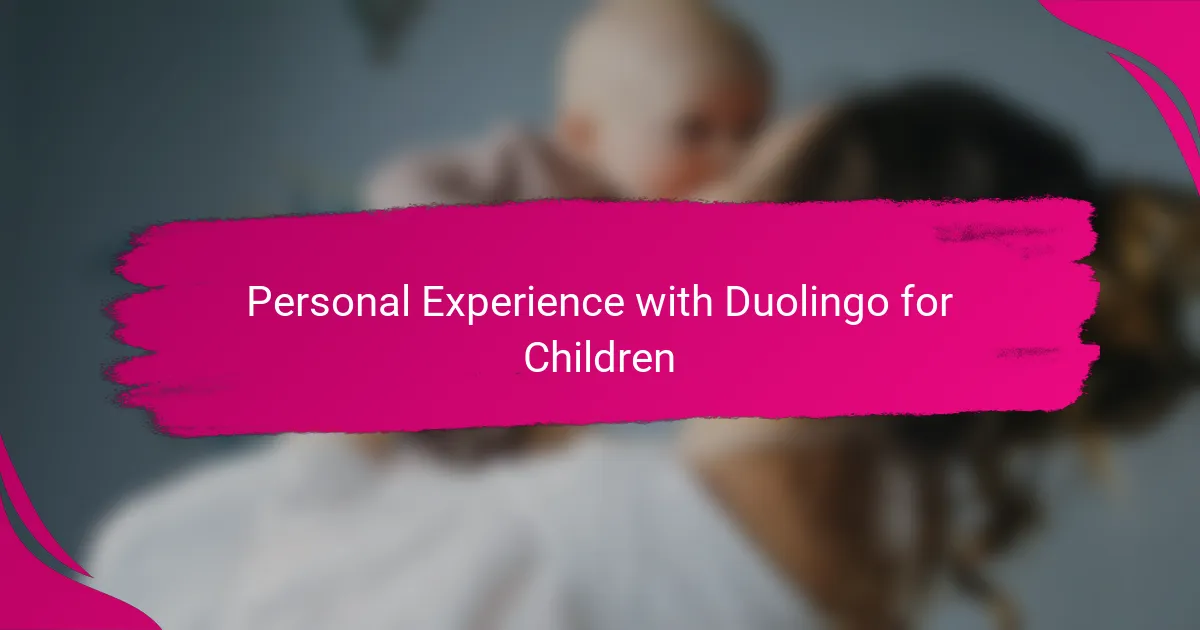Key takeaways
- Consistent practice and everyday conversations are essential for effective language skills development in children.
- Duolingo provides a gamified approach to language learning, making it engaging through short, manageable lessons and positive reinforcement.
- Parental involvement significantly enhances motivation and helps bridge the gap between digital learning and real-world application.
- Setting daily, achievable goals and celebrating small milestones can maintain enthusiasm and reinforce the learning process.

Understanding Language Skills Development
Language skills don’t just pop up overnight—they grow gradually, shaped by listening, speaking, reading, and writing. When I first guided my child through these stages, I noticed how crucial everyday conversations were in building a strong foundation before moving on to more complex tasks.
Have you ever wondered why some kids pick up new languages so easily while others struggle? For me, it became clear that consistent practice and exposure, tailored to their interests, made all the difference in turning language learning from a chore into an enjoyable habit.
It’s fascinating how every small interaction, like asking about their day or reading a bedtime story, feeds into their ability to understand and use language confidently. From my experience, understanding this natural progression helps parents be patient and supportive, appreciating that setbacks are just part of the journey.

Overview of Duolingo for Beginners
Duolingo offers a very beginner-friendly way to start learning a language, especially for kids. When I introduced it to my child, the bite-sized lessons and colorful interface made the experience feel less like homework and more like playing a game. Have you noticed how motivation spikes when learning feels fun rather than forced?
What I appreciate most is how Duolingo breaks down language into manageable skills—listening, speaking, reading, and writing—building confidence step by step. It reminded me of how I guided my child through those early stages, combining practice with frequent encouragement. The app’s immediate feedback helped my child stay engaged and understand mistakes without feeling discouraged.
But I also found myself wondering if an app alone is enough. While Duolingo lays a solid groundwork, I saw that real progress came when we paired it with daily conversations and real-world practice. This balance keeps learning dynamic, turning those small lessons into lasting skills.

Benefits of Duolingo for Kids
One of the biggest benefits I saw with Duolingo for my child was how it turned language learning into a daily routine without feeling like a burden. The short, game-like lessons made it easy to fit practice in—even on busy days—which meant consistent exposure without the usual resistance. Have you noticed that kids stick with things better when it feels like play rather than work?
Another thing I really appreciated was how Duolingo’s positive reinforcement boosted my child’s confidence. Each time they completed a lesson or earned a reward, their excitement was contagious. It reminded me how essential it is to celebrate small wins, especially when trying something new and challenging.
Lastly, the app’s ability to tailor lessons based on progress kept my child from feeling overwhelmed, which can be a real stumbling block in language learning. Seeing a personalized path gave a sense of ownership and made the whole process feel achievable. Don’t we all learn better when the journey matches our pace and interests?

Challenges of Using Duolingo in Parenting
One challenge I encountered with Duolingo was that the app sometimes felt too rigid for my child’s unique learning style. Have you ever noticed how kids respond differently to digital lessons compared to natural conversations? For us, the lack of spontaneous interaction made it harder to develop speaking confidence beyond the app’s scripted exercises.
Another issue I noticed is that Duolingo doesn’t always address the cultural nuances behind language use. While my child learned vocabulary and grammar, I had to step in to explain context or slang that apps just can’t teach. It made me realize how essential parents are in bridging that gap, especially when language learning extends beyond words.
Also, staying motivated through Duolingo can be tricky without parental involvement. I found that without my encouragement, the novelty wore off quickly, and my child’s enthusiasm dipped. How do you keep a child engaged when the initial excitement fades? For me, mixing app time with real-life practice kept things fresh and meaningful.

Personal Experience with Duolingo for Children
When I first introduced Duolingo to my child, I was excited to see how quickly they took to the app’s bright colors and playful sounds. It felt like watching them discover a new world, especially when they proudly showed me their streaks and crowns. Have you ever witnessed that sparkle in a child’s eyes when they realize they’ve learned a new word all on their own? That moment was pure joy for both of us.
That said, I noticed my child sometimes got stuck on certain exercises, especially speaking challenges. It made me realize that while Duolingo encourages practice, it can’t fully replace the back-and-forth of a real conversation. I found myself stepping in to role-play dialogues, turning the app’s lessons into fun, interactive moments. Isn’t it amazing how a little parental involvement can transform digital learning into something more meaningful?
Also, I remember days when motivation dipped, and the app felt more like a chore than a game. But by celebrating each small achievement and sometimes competing playfully with my child, we kept the momentum alive. From my experience, these shared moments not only boosted their language skills but also strengthened our bond. Doesn’t language learning become more rewarding when it’s a journey you take together?

Tips for Maximizing Duolingo Effectiveness
To get the most out of Duolingo, I found that setting a regular, short daily goal works wonders. Instead of overwhelming my child with long sessions, those 5 to 10 minutes felt manageable and kept the learning consistent. Have you ever noticed how small, steady steps seem less daunting and actually build confidence over time?
Mixing Duolingo practice with real-life conversation made a big difference for us. After a lesson, I’d ask my child to use a new word or phrase during dinner or playtime. It wasn’t about perfection but making language learning feel alive and practical. Don’t you find that turning lessons into real conversations bridges the gap between knowing and using a language?
Lastly, I learned it’s crucial to celebrate progress, no matter how small. When my child earned streaks or completed a tough lesson, we’d cheer together. Those moments kept motivation high and reminded us both that every step forward is worth acknowledging. Have you tried turning language milestones into little celebrations? It makes the whole experience more joyful and encouraging.
